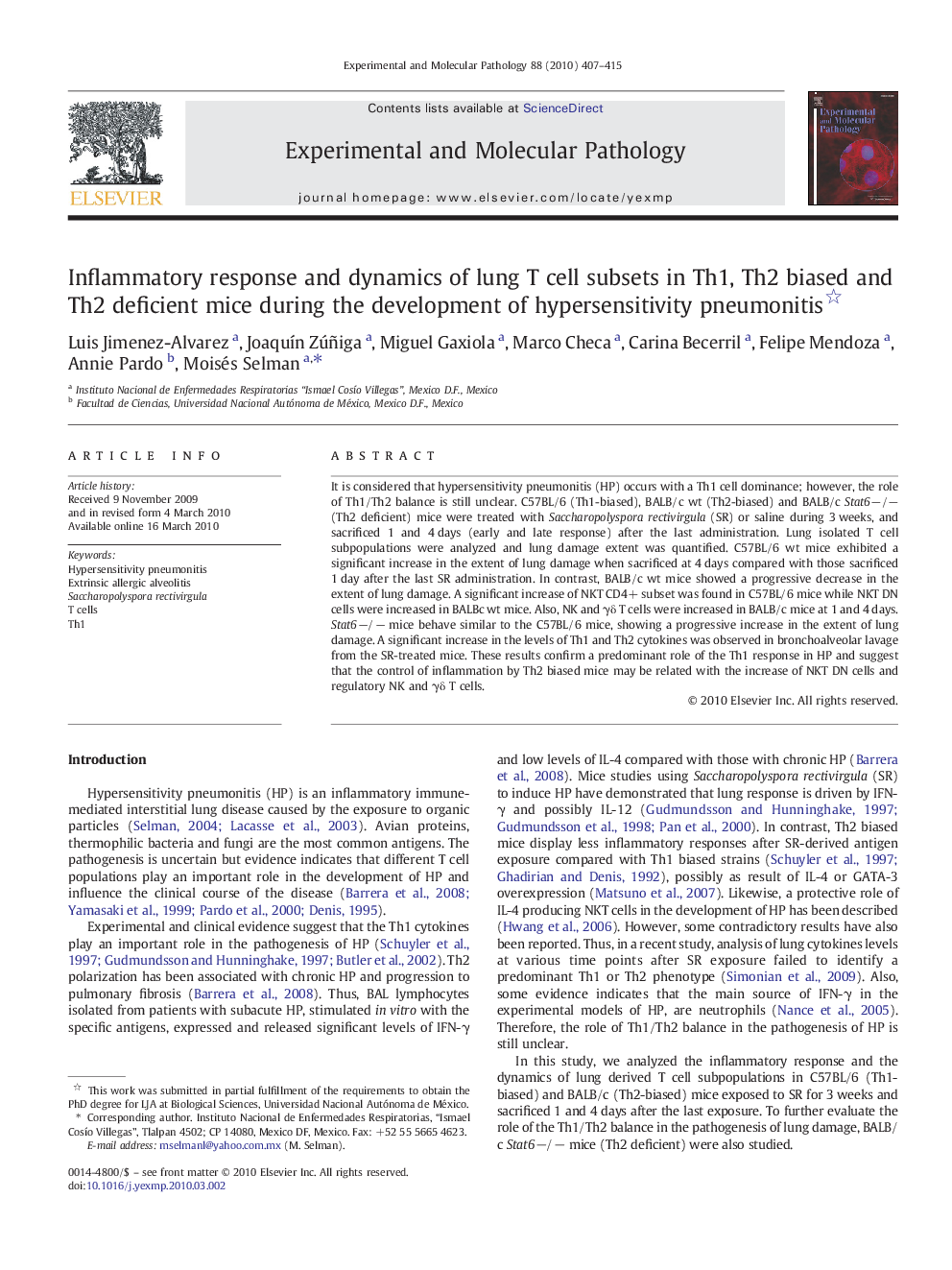| Article ID | Journal | Published Year | Pages | File Type |
|---|---|---|---|---|
| 2775574 | Experimental and Molecular Pathology | 2010 | 9 Pages |
It is considered that hypersensitivity pneumonitis (HP) occurs with a Th1 cell dominance; however, the role of Th1/Th2 balance is still unclear. C57BL/6 (Th1-biased), BALB/c wt (Th2-biased) and BALB/c Stat6−/− (Th2 deficient) mice were treated with Saccharopolyspora rectivirgula (SR) or saline during 3 weeks, and sacrificed 1 and 4 days (early and late response) after the last administration. Lung isolated T cell subpopulations were analyzed and lung damage extent was quantified. C57BL/6 wt mice exhibited a significant increase in the extent of lung damage when sacrificed at 4 days compared with those sacrificed 1 day after the last SR administration. In contrast, BALB/c wt mice showed a progressive decrease in the extent of lung damage. A significant increase of NKT CD4+ subset was found in C57BL/6 mice while NKT DN cells were increased in BALBc wt mice. Also, NK and γδ T cells were increased in BALB/c mice at 1 and 4 days. Stat6−/− mice behave similar to the C57BL/6 mice, showing a progressive increase in the extent of lung damage. A significant increase in the levels of Th1 and Th2 cytokines was observed in bronchoalveolar lavage from the SR-treated mice. These results confirm a predominant role of the Th1 response in HP and suggest that the control of inflammation by Th2 biased mice may be related with the increase of NKT DN cells and regulatory NK and γδ T cells.
